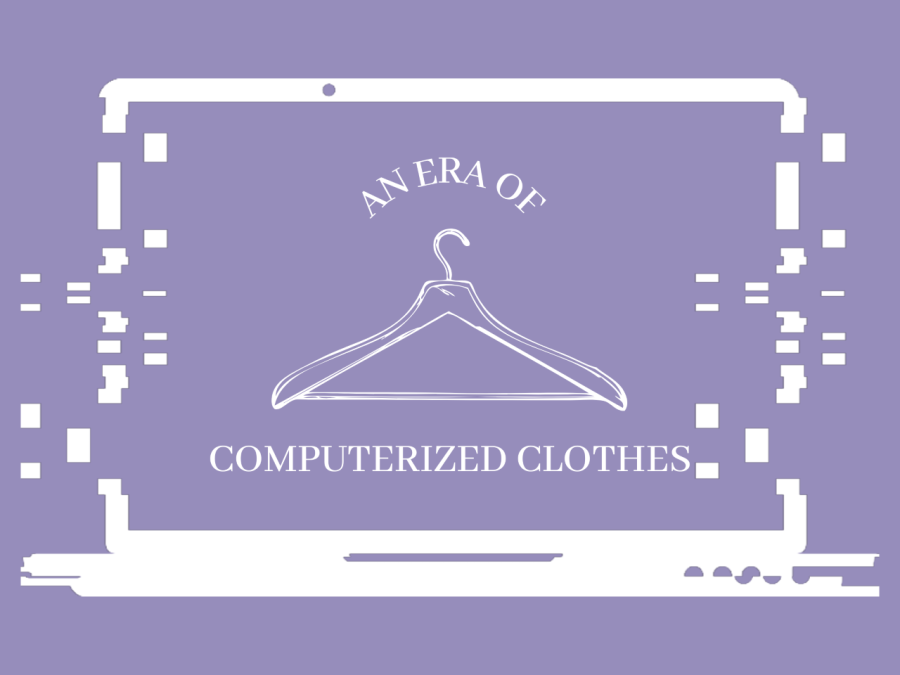Pixels over Textiles: A New Age of Digital Clothing
February 11, 2022
Nowadays, almost everything is online. Entertainment, shopping, even school and jobs. If you think about it really, what is there left to follow? Even clothes are covered.
Digital Fashion. When I first heard about it I didn’t think it would be exactly as the name said. The concept seems a bit weird to me but also cool. So what is digital fashion?
Digital fashion isn’t a physical thing. It’s not something you order and have delivered to your doorstep but something you purchase online and have it remain online as well.
Using different computer technology and 3D software, digital clothing is created and sold for people to wear digitally. This means that you can have these digital clothing pieces fit onto a photo of yourself or you can download the files yourself and edit it onto a picture of you. And it may sound unnecessary as you can just wear clothes right? Nonetheless, the growth of digital clothing has accelerated throughout the pandemic, and here’s why the digital clothing industry may be doing so!
Digital clothing can be more creative and imaginative compared to regular physical clothing. There are many restrictions when it comes to physical pieces such as cost, materials, and possibility as well. Certain materials and ideas are incredibly difficult to get and execute so what could take multiple weeks to make could take hours-days to create digitally. And with digital clothing, designers are able to add other materials and imaginative items that would be impossible to do in real life. There’s also a wide variety of what you can do with digital clothing, from fantasy-like clothing pieces to shoes that give you a whole new look.
Since digital clothing has such an unlimited amount of possibilities, one of the biggest reasons for the growth of this industry becomes social media. Especially during the pandemic and covid times, it was tough to go out and buy clothes, and it was so much more expensive. Designer clothing is known for being extremely pricey, and for those who dedicate themselves to social media, digital clothing is a much better deal. For example, when it comes to shoes, the average price for non-luxury branded shoes was around $100 per pair, but when it came to shoes designed by designer brands the price ranged anywhere from $215 to up to $1,400. That can be anywhere from twice to 14 times as much as regular shoes. And I’m sure the prices are only worse for other pieces of clothing. And for people considered Instagram models or who have social media as their main source of income, it’s no use to spend up to a thousand dollars on a piece of clothing they’ll wear once for an Instagram picture and never again. Digital clothing has a wide price range which could end up being more affordable for those purchasing it as they can find clothing pieces to fit their budget. Though in the end, it’s not the question of which is more affordable but which has more uses.
Lastly, digital clothing is much more eco-friendly compared to the traditional fashion industry. In the fashion industry, waste is one of the biggest issues. The physical fashion industry does more to contribute to climate change than the annual emissions of air and sea travel combined. Even if the physical fashion industry was to use only recycled materials or the most organic materials, it’s still more wasteful than digital. To put it in perspective, the carbon footprint of producing a digital garment is 95% lower than that of a regular physical garment.
But at the same time, digital clothing can be sold in the form of NFT’s which can be considered to be almost just as bad as the physical fashion industry. NFT’s use a lot of energy, and the energy used for these transactions is a big problem. Susanne Kohler, a sustainable blockchain technology researcher at Aalborg University in Denmark, said that miners typically use cheap electricity such as fossil fuels (a nonrenewable resource) to maximize their profits. In the long run, this could end up catching up to or being far worse than the physical fashion industry.
Some people believe that digital fashion could one day get rid of the need for real palpable clothing, but how likely is it that we would be able to get rid of the physical clothing that we’ve had for centuries with a newer concept not many are familiar with?
Digital fashion has its fair share of both positives and negatives, whether this ends up being worse or better than the physical fashion industry is a question for the future. The rest of the world has begun to go all pixels, no textiles but in the end, is this a good thing or a bad thing?







